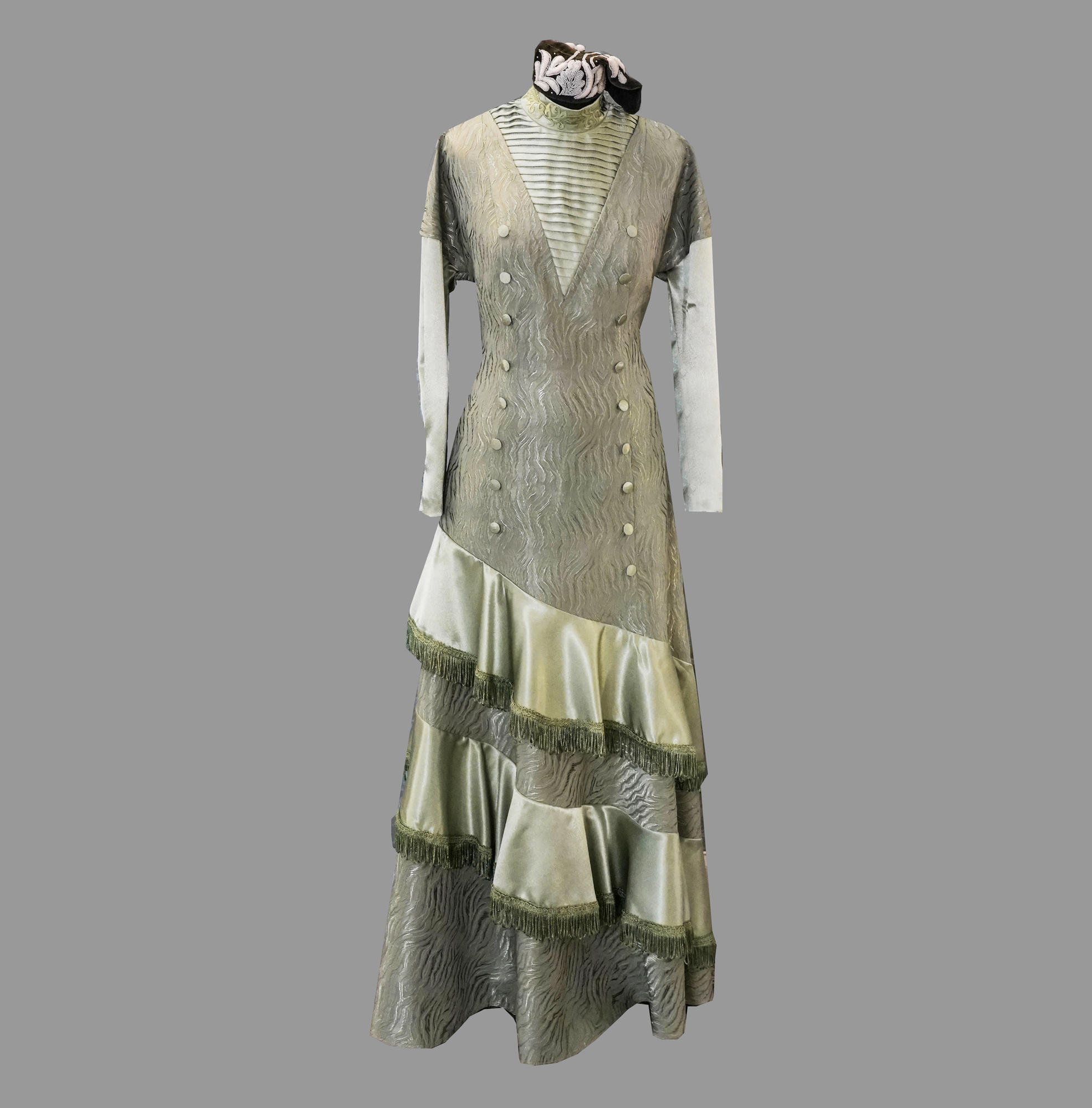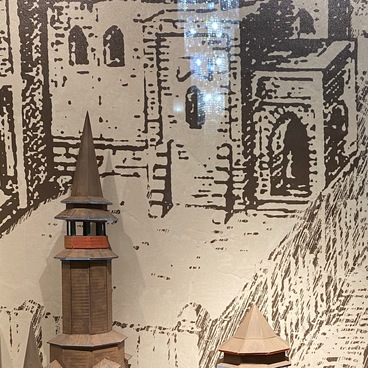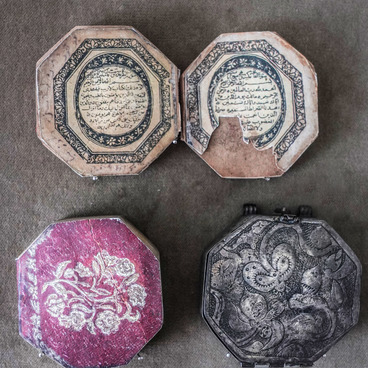At the turn of the 19th and 20th centuries, a Tatar townswoman wore a long dress and a kalfak (a small hat embroidered with beads and held in place by hooks or hairpins). The display case features a reconstructed everyday dress worn by a townswoman from a wealthy family. The dress has a nice olive color and straight cut. The skirt is widened in the lower part and decorated with two satin fringed frills. The dress has long sleeves and decorative buttons sewn onto the front part in two symmetrical rows.
Late 19th and early 20th centuries are cited as one of the most interesting periods of time in the Tatar culture. Muslims of the Russian Empire took an active part in the country’s social and cultural life, and therefore, with the onset of the era of capitalism, the mingling of Tatar traditions with European innovations was inevitable. It had a certain effect not only on the education system, but also on relations within the society. Western influence was also seen in fashion. Although men’s and women’s clothes did not depart from the origins of traditionalism, they did undergo some changes.
Women, especially ladies living in cities, changed the cut of their clothes. Tatar women who used to wear tunic-shaped garments, changed them at the end of the 19th century to slanted shoulder dresses with wide sleeves coming down from pleated sleeve tops and a band collar flowing into a faux blouse covering the low neck area. Women got rid of their mandatory chest bands called ‘izu’ and ‘kukrache’.
The skirt hem in the back is longer than in the front. The silhouette was made to the desired shape using special patterned pleats stitched up on the back of the dress. The front of the skirt was gathered in at the waist, but most of the folds were in the back. The respectability and wealth of a family could be determined by the amount of fabric used to make a dress.
A Tatar woman’s festive attire included a velvet kalfak. Initially a traditional intricately embroidered headdress, it turned into a decorative headpiece by the 1890s. Such miniature hat was held on the head using small hooks sewn onto its inner side. Those women, who preferred voluminous hair styles, used hairpins to hold such a hat in place. When a woman went out, she put a beautiful silk shawl over her kalfak. Fashion-conscious women of the early 20th century preferred knitted silk shawls. Shiny and supple, they could be beautifully draped in many ways.
Late 19th and early 20th centuries are cited as one of the most interesting periods of time in the Tatar culture. Muslims of the Russian Empire took an active part in the country’s social and cultural life, and therefore, with the onset of the era of capitalism, the mingling of Tatar traditions with European innovations was inevitable. It had a certain effect not only on the education system, but also on relations within the society. Western influence was also seen in fashion. Although men’s and women’s clothes did not depart from the origins of traditionalism, they did undergo some changes.
Women, especially ladies living in cities, changed the cut of their clothes. Tatar women who used to wear tunic-shaped garments, changed them at the end of the 19th century to slanted shoulder dresses with wide sleeves coming down from pleated sleeve tops and a band collar flowing into a faux blouse covering the low neck area. Women got rid of their mandatory chest bands called ‘izu’ and ‘kukrache’.
The skirt hem in the back is longer than in the front. The silhouette was made to the desired shape using special patterned pleats stitched up on the back of the dress. The front of the skirt was gathered in at the waist, but most of the folds were in the back. The respectability and wealth of a family could be determined by the amount of fabric used to make a dress.
A Tatar woman’s festive attire included a velvet kalfak. Initially a traditional intricately embroidered headdress, it turned into a decorative headpiece by the 1890s. Such miniature hat was held on the head using small hooks sewn onto its inner side. Those women, who preferred voluminous hair styles, used hairpins to hold such a hat in place. When a woman went out, she put a beautiful silk shawl over her kalfak. Fashion-conscious women of the early 20th century preferred knitted silk shawls. Shiny and supple, they could be beautifully draped in many ways.



